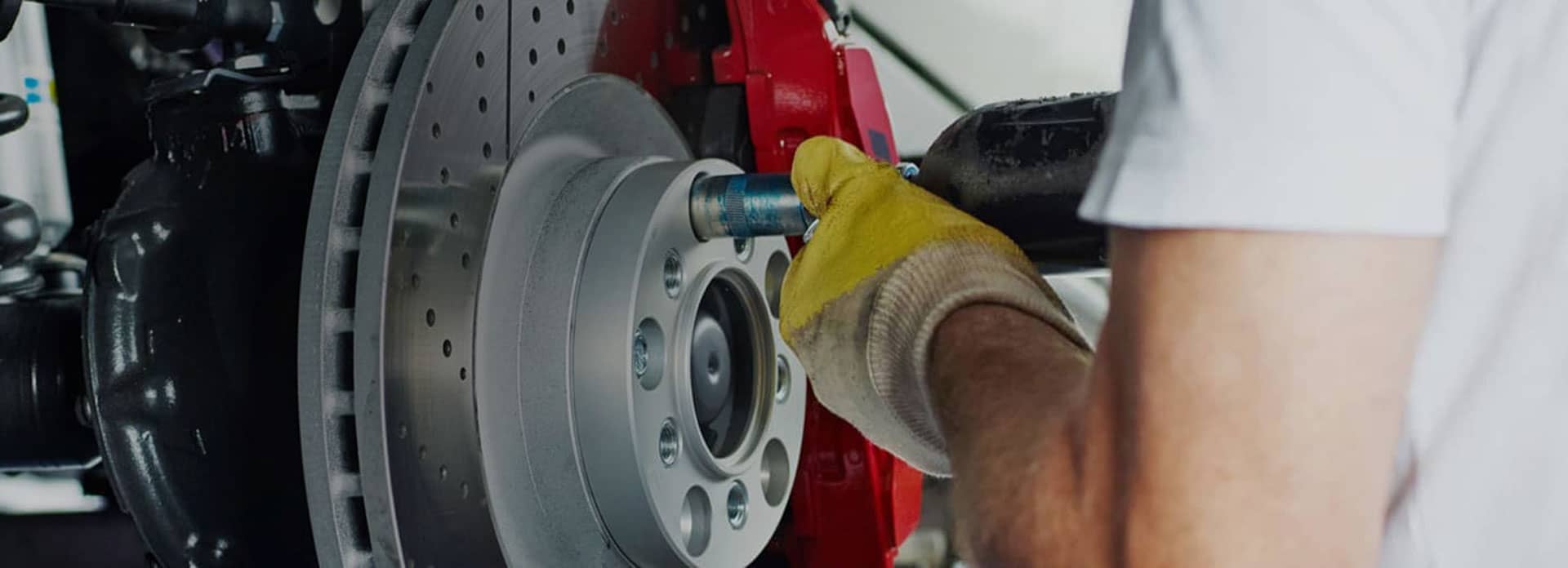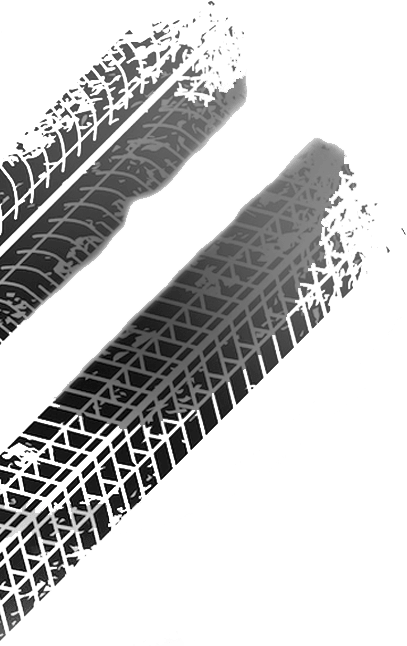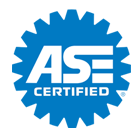Tire Maintenance in brandon
Posted February 24, 2010 12:00 PM
With the recent focus in the brandon area on improving fuel economy, we've been told how important it is to maintain our tire pressure.
brandon drivers know that tires wear out, but we want to make them last as long as possible because they're not cheap to replace. In addition to saving gas, properly inflated tires last longer. Underinflated tires will wear out more quickly.
Some people in brandon wonder if they should add a few extra pounds of pressure when they fill up their tires. Bad idea. In fact, there are very good reasons not to overinflate your tires. For one, the middle of the tread will wear unevenly because the full tread is not contacting the road properly. That also adversely affects your handling.
Stop by autoclinic of brandon to see about tire maintenance for your vehicle.
autoclinic of brandon
901A WEST BRANDON BLVD
brandon, florida 33511
813-654-8686
Every vehicle in the brandon area has a sticker on the driver's side door jamb that tells you the vehicle manufacture's recommended tire pressure. This recommendation is an integral part of the vehicle's suspension tuning. A lot of engineering actually goes into the recommended tire pressure, so it's important for drivers to follow it.
What else do brandon drivers need to know about tire maintenance? Tire rotation and balancing are very important. Let's start with rotation. Because the front tires handle the brunt of turning forces, the shoulders of the front tires wear more quickly than the rear tires. At autoclinic of brandon in brandon, we rotate the tires so that they all get to do some duty on the front, and they'll all wear evenly over their live.
For most vehicles, front tires are rotated to the rear and vice versa. Others recommend a cross rotational pattern. Some vehicles use an asymmetrical tire so those tires need to stay on either the right or left side – it'll say which on the tire. Some high performance cars have asymmetrical tires and different sizes on the front and rear. These can't be rotated at all. Your owner's manual will have details for your vehicle or ask your service advisor at autoclinic of brandon.
How often should people near brandon rotate their tires? Your owner's manual will have a recommendation. Your technician at autoclinic of brandon in brandon can do a visual inspection to let you know if it looks like it should be done. The interval is typically around 5,000 miles/8,000 km.
You know, some people don't think new tires need to be balanced. What they aren't taking into account is the wheel. Between the wheel and the tire – even a new tire – there's enough variation to require balancing.
When you add the valve stem and tire pressure monitoring sensors required on new cars, balancing is definitely important. When a tire's out of balance, it's actually hopping down the road. brandon vehicles with tires out of balance will feel the vibration through the steering wheel if a front tire's out of balance and through the seat if it's a rear tire.
Proper wheel balance promotes tire life and increases safety for brandon drivers and their passengers. Historically, lead weights have been attached to the wheel to bring it into balance. Lead gives some environmental concern, so steel weights are starting to be substituted.
The team at autoclinic of brandon also wants to remind you that it is important to always use the same size tire on an axle. Different size tires on the front or on the back can lead to some real handling problems. And tire manufacturers recommend that when you get two new tires, they be installed on the rear because that's where you need the most traction to avoid spinning out.
Maintaining Your Older Car in brandon, florida
Posted February 16, 2010 10:00 AM
The government mandates a lot of equipment on cars in brandon, florida: emission devices and control computers, safety equipment like airbags and crash worthiness requirements. All of this is great for the brandon motoring public, but it does add quite a bit to the price of a new vehicle.
Because new vehicles are more expensive, people in the brandon area are driving their old vehicles longer. The average vehicle is now over nine years old. Two thirds of vehicles on the road in florida have more than 75,000 miles (120,000 km) on them. As cars age, their performance drops, they have difficulty idling for long periods and are more sensitive to weather extremes. Fortunately today's cars are up to the challenge – but they need a little help to keep on goin'.
Give autoclinic of brandon a call at 813-654-8686 to schedule your next maintenance.
Some owner's manuals don't specify service requirements at higher mileage. That doesn't mean it doesn't have to be done. In fact, it's more important than ever to stay on top of routine maintenance for cars with more than 75,000 miles (120,000km).
First, just extend regular service intervals out: for instance a service that's recommended every 15,000 miles (24,000 km) should be performed at 15,000, 30,000, 45,000 and 60,000 miles (24,000, 48,000, 72,000 and 96,000 km) and so on. Because of the additional stress older engines experience, the severe service maintenance schedule is more appropriate than the regular schedule; ask your service advisor. Watch for leaks; seals and gaskets dry out over time and don't hold the fluids as well as they used to.
It's also time to make sure you have a good technician, like those here at autoclinic of brandon. There are some services and replacements that are scheduled after you put on some clicks, like timing belts, valve train adjustments, suspension, anti-lock brake service, air bags, etc. And unexpected repairs down the road are just par for the course. Check for unusual sounds, smells or the way your car feels. These could be hints that trouble's brewing. Better to catch it early before it turns into a costly repair.
And a regular wash and wax will help maintain your car's appearance. One of the things you can do to really help your high mileage vehicle is to begin using high mileage formulation fluids. There are special engine oils, coolants, and transmission and power steering fluids that are formulated for cars that have a few clicks on the old odometer.
High mileage oil is designed to condition seals and gaskets, reduce wear and avoid premature burn off. Older engines are dirtier inside – and dirty engines contaminate their oil faster. High mileage oil has special additives that clean the engine, removing sludge deposits over time. The result is less stress on the engine, better fuel economy and excellent wear protection.
Studies have even shown that using high mileage fluids early will actually prevent some of the problems of high mileage vehicles. So once you hit around 50,000 miles (80,000 km), consider stepping up to high mileage formulations. High mileage fluids cost a bit more than standard fluids because of the additional additives, but they can be worth their weight in gold in terms of preventing repair costs down the road. It does cost more to properly maintain a higher mileage vehicle – but it's way cheaper than a new car payment!
autoclinic of brandon
901A WEST BRANDON BLVD
brandon, florida 33511
813-654-8686
When Are Your Tires Worn Out?
Posted February 11, 2010 3:00 AM
Hey brandon area drivers, are your tires worn out? What is the standard for our florida streets? How can you tell on your vehicle?
While there may be legal requirements for the brandon area, there are safety concerns that go beyond meeting minimum replacement mandates.
Two-thirty-seconds of an inch is the depth of the tire tread wear indicator bars that US law has required to be molded across all tires since August 1, 1968. When tires are worn so that this bar is visible, there's just 2/32 of an inch – 1.6 millimeters – of tread left. It's that level of wear that's been called into question recently.
We're referring to the tread depth on a tire, it can't move surface water out of the way and you start to hydroplane.
In a safety study, a section of a test track was flooded with a thin layer of water. If you laid a dime on the track, the water would be deep enough to surround the coin, but not enough to cover it.
A car and a full-sized pick-up accelerated to 70 miles per hour, or 112 kilometers an hour, and then made a hard stop in the wet test area. Stopping distance and time were measured for three different tire depths:
- New tire tread depth
- 4/32 of an inch, or 3.2 mm
- 2/32 of an inch, or 1.6 mm
So what happened with the 2/32 inch/1.6 mm tires on the car? Get this – when the car had traveled the distance required to stop with new tires, it was still going 55 mph/89 kph. Stopping distance was nearly doubled to 379 feet/116 meters, and it took 5.9 seconds.
Wow! That means if you barely have room to stop with new tires, you would hit the car in front of you at 55 mph/89 kph with the worn tires.
Now, with the partially worn tires – at 4/32 of an inch, or 3.2 mm – the car was still going at 45 mph/72 kph at the point where new tires brought the car to a halt. It took nearly 100 feet, or about 30 meters, more room to stop and 1.2 seconds longer. That's a big improvement. We can see why Consumer Reports and others are calling for a new standard.
Of course, stopping distances were greater for the heavier pick-up truck.
How do you know when your tires are at 4/32 inch or 3.2 mm? Easy; just insert an American quarter into the tread. Put it in upside down. If the tread doesn't cover George Washington's hairline, it's time to replace your tires. With a Canadian quarter, the tread should cover the numbers in the year stamp.
You may remember doing that with pennies. A penny gives you 2/32 inch, or 1.6 mm, to Abraham Lincoln's head. The quarter is the new recommendation – 4/32 inch, or 3.2 mm.
How do people feel about replacing their tires earlier? Well, tires are a big ticket item and most people want to get the most wear out of them that they can. But do you want that much more risk just to run your tires until they are legally worn out?
For us, and we would guess for many, the answer is "no".
autoclinic of brandon
901A WEST BRANDON BLVD
brandon, florida 33511
813-654-8686
The Harm in Skipping an Oil Change for brandon Drivers
Posted February 5, 2010 11:00 AM
People in brandon have been hearing a lot about higher oil change intervals these days. Maybe you're wondering: What are the key issues?
Some new vehicle manufacturers are now recommending much higher oil change intervals than they have in the past. As much as 5,000 to 8,000 miles (8,000 km to 13,000 km) or more. This practice came under scrutiny when four of the largest new vehicle manufacturers announced that owners like those in brandon were experiencing engine damage resulting from these higher oil change intervals.
The manufacturers' standard oil drain service for particular vehicles was scheduled at around 7,500 miles/12,000 km. People following these recommendations were experiencing engine damage. It turns out that oil sludge was building up. This caused small oil passages to clog and engine parts to fail.
What causes oil sludge? It's a factor of time and mileage. There are hot spots in every engine that cause oil burn off that leads to sludge. Also, water from normal condensation can build up in the oil. This water also creates sludge. Severe driving conditions lead to more rapid sludge formation.
Severe driving around brandon includes short trips under four miles (six and a half km) or trips under 10 miles/16 km in freezing conditions. The engine just doesn't get warm enough for the water in the oil to evaporate.
Severe conditions are at the heart of the problem. Stop-and-go driving, towing, dusty conditions, heavy loads, very hot or very cold temperatures, a car top carrier – these are all conditions that would suggest that the severe service schedule should be considered.
The severe service schedule has much shorter oil change intervals. People in brandon just need to honestly evaluate how they drive to determine if they should change their oil closer to the severe service schedule or to the standard schedule.
Some types of vehicle will give oil change reminders. But it's important to know how that reminder is determined. For some, the reminder simply comes when the standard mileage interval has rolled around. Others use a computer algorithm that takes into consideration the number of cold starts, trip length, engine temperature and so on. It's programmed to approximate where on the standard/severe service spectrum you fall. Some more expensive vehicles actually have sensors that test the cleanliness and effectiveness of the oil.
For the rest of us, better safe than sorry should be the guiding principle. Talk with your brandon service advisor at autoclinic of brandon and work it out together. Find out what kind of oil the factory sends out in your vehicle. Sometimes it's a premium grade that costs more than standard oil – but it may be what's needed to meet a higher factory recommended interval.
If you're realistically conservative, standard grades of oil will take care of you year after year. If you want to push the limits, ask for a premium grade oil to give you extra protection.
So, what happened with those manufacturers with the problems from higher oil change intervals? They ended up extending the engine warranty for parts that were affected by oil sludge. But they had a stipulation – they lowered the oil change interval and the vehicle owner had to provide proof of oil changes at the new lower interval to keep the extended warranty.
autoclinic of brandon
901A WEST BRANDON BLVD
brandon, florida 33511
813-654-8686





.png)






